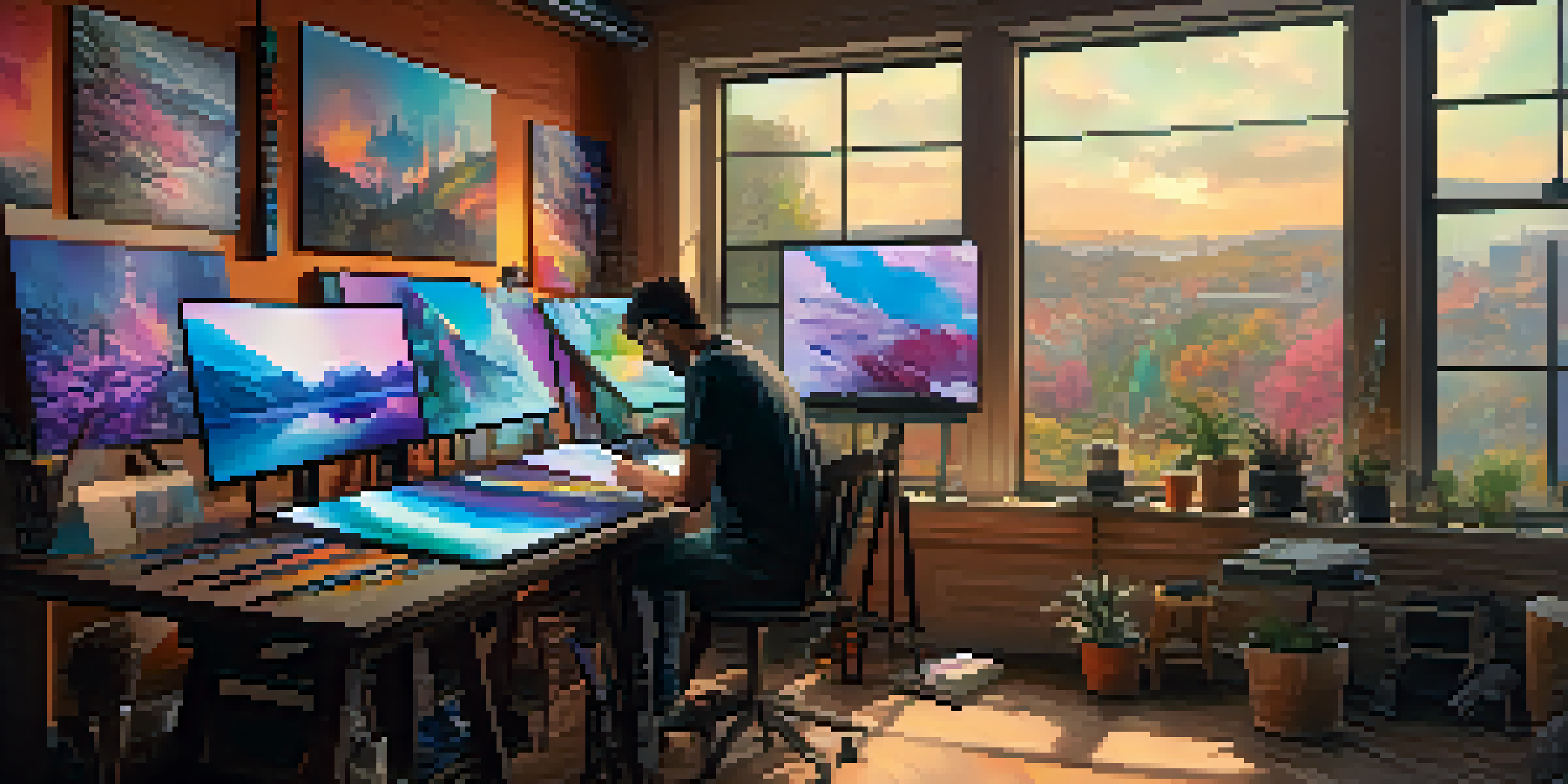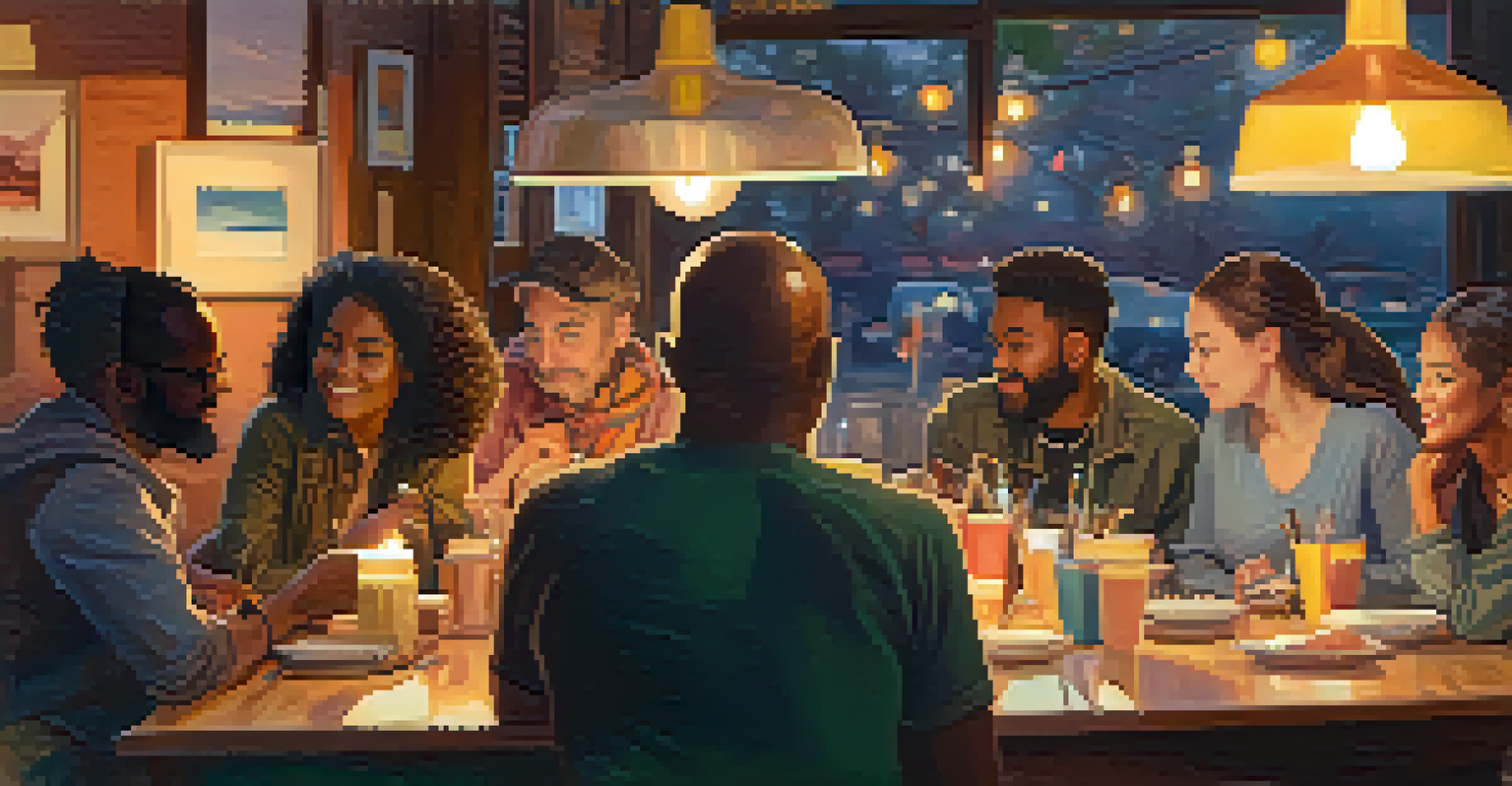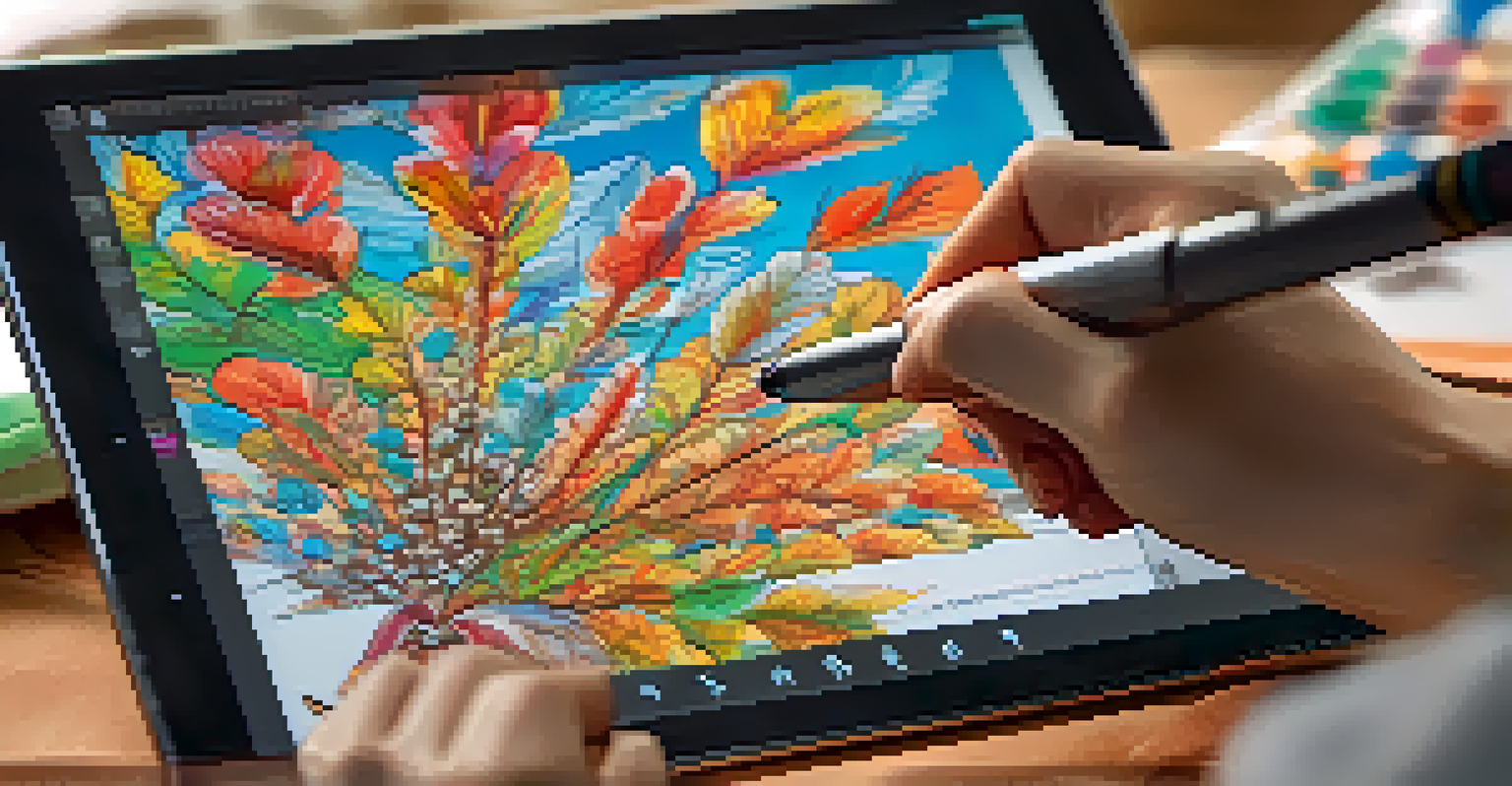The Impact of Social Media on Modern Art Practices

Social Media as a New Gallery Space for Artists
In the past, artists relied on physical galleries to showcase their work, but today, social media platforms have transformed this landscape. Artists can now share their creations with a global audience instantaneously, breaking down geographical barriers. This shift not only democratizes access to art but also allows for a more diverse range of artistic expressions to flourish. For instance, platforms like Instagram have become a virtual gallery where anyone can discover emerging talents from anywhere in the world.
Art is the most beautiful of all lies.
Moreover, the visual nature of social media makes it an ideal medium for artists to present their work. With a simple post, an artist can reach thousands, if not millions, of viewers. This instant feedback loop can be incredibly motivating, as artists can gauge audience reactions in real-time. For example, a painter might share a work-in-progress, receiving comments and suggestions that can influence their final piece.
However, this new gallery space comes with its own set of challenges. The pressure to maintain a consistent online presence can be overwhelming for some artists. Balancing the need for social media engagement with the creative process can sometimes lead to burnout, as the line between art and marketing becomes blurred.
Fostering Community and Collaboration Among Artists
Social media has also fostered a sense of community among artists, allowing them to connect and collaborate in ways that were previously unimaginable. Online platforms enable artists to share resources, tips, and support, creating a nurturing environment that encourages growth. For instance, hashtag movements like #ArtistsOnInstagram have galvanized creators to showcase their work and engage with fellow artists.

Collaboration has taken on new dimensions thanks to digital tools and platforms. Artists can easily collaborate on projects, even if they are continents apart. A digital artist in Tokyo might team up with a sculptor in New York, merging their unique styles to create a piece that reflects a blend of cultures and ideas. This cross-pollination of creativity enriches the art world, leading to innovative outcomes.
Social Media Transforms Art Access
Artists can now showcase their work globally, breaking geographical barriers and democratizing access to diverse artistic expressions.
Furthermore, these online communities often provide a platform for marginalized voices that may not have received attention in traditional art spaces. Artists from diverse backgrounds can share their narratives and experiences, fostering understanding and empathy through their work. This inclusivity is essential for the evolution of art in our global society.
The Rise of Art Influencers and Their Impact
The emergence of art influencers on social media has significantly impacted how art is perceived and consumed. These influencers often curate content that showcases not only their own work but also that of other artists, helping to amplify diverse voices. Their ability to reach large audiences means they can shape trends and drive the conversation around contemporary art.
The role of the artist is to make the world visible.
However, this influencer culture can sometimes lead to a commodification of art, where the value of a piece is measured by likes and shares rather than intrinsic quality. Artists may feel pressured to create what is visually appealing for social media rather than pursuing their authentic vision. This shift raises questions about the true essence of art and whether it can withstand the scrutiny of social media metrics.
Despite these challenges, many artists have found ways to navigate this landscape successfully. By staying true to their artistic integrity while engaging with their audience, they can maintain a balance that honors their craft while also building a following. The key is to use social media as a tool for connection rather than a measure of worth.
The Role of Digital Art in Social Media Platforms
Digital art has gained unprecedented popularity in the age of social media, allowing artists to create and share their work in innovative ways. The accessibility of digital tools means that anyone with a computer or tablet can experiment with art, leading to an explosion of creativity. Platforms like Behance and DeviantArt cater specifically to digital artists, providing a supportive space for feedback and collaboration.
Additionally, the rise of animations and short videos on platforms like TikTok has opened new avenues for artistic expression. Artists can create captivating content that highlights their process, making art more engaging and relatable. For example, a digital illustrator might post a time-lapse video of their creation, allowing viewers to witness the transformation from a blank canvas to a finished piece.
Community and Collaboration Thrive
Online platforms foster community among artists, enabling collaboration and support that enriches creativity and inclusivity.
However, the prevalence of digital art also raises questions about originality and ownership. With the ease of sharing and remixing online, artists must navigate the complexities of copyright and attribution. Establishing a clear understanding of these issues is crucial for protecting their work while still embracing the opportunities that digital platforms provide.
Challenges Facing Artists in the Social Media Era
While social media offers numerous benefits to artists, it also presents a unique set of challenges. The constant demand for fresh content can lead to creative fatigue, as artists feel pressured to continually engage their audience. This cycle can stifle creativity, making it difficult for artists to produce their best work.
Moreover, the algorithms that govern social media platforms often prioritize content that generates high engagement, which can inadvertently marginalize niche artists. Those whose work doesn't conform to mainstream trends may struggle to gain visibility, despite their talent. This can create a sense of frustration and isolation, especially for emerging artists trying to establish their presence.
Additionally, the risk of negative feedback or online trolling can deter artists from sharing their work. The fear of criticism can be paralyzing, preventing them from expressing themselves authentically. It's essential for artists to build resilience and develop a supportive network to navigate these challenges effectively.
The Importance of Authenticity in Online Art Spaces
In a world where trends change at lightning speed, authenticity has become a vital currency for artists on social media. Audiences are drawn to genuine voices that resonate with their experiences, making it crucial for artists to stay true to themselves. By sharing their unique perspectives and stories, artists can forge deeper connections with their followers.
This authenticity can manifest in various forms, from candid behind-the-scenes glimpses into an artist's life to sharing the struggles and triumphs of their creative journey. Such transparency invites viewers to engage with the artist on a personal level, fostering a sense of community and loyalty. For example, an artist who openly discusses their mental health challenges may inspire others to share their own experiences, creating a supportive dialogue.
Authenticity is Key for Artists
Staying true to their unique perspectives helps artists forge deeper connections with audiences in the fast-paced social media landscape.
Ultimately, authenticity not only enhances an artist's visibility but also enriches the art community as a whole. It encourages diverse narratives and fosters an environment where all voices are valued. By prioritizing authenticity, artists can carve out a meaningful space for themselves and their work in the bustling world of social media.
Looking Ahead: The Future of Art in a Digital World
As technology continues to evolve, so too will the ways in which artists create and share their work. The future of art in a digital world is likely to be characterized by even more immersive experiences, such as virtual reality (VR) and augmented reality (AR). These innovations will allow artists to push the boundaries of creativity, transforming how audiences engage with art.
Social media will remain a crucial platform for artists to showcase their work and connect with their communities. However, it will be important for artists to remain adaptable and open to new platforms as they emerge. As new technologies develop, so too will the opportunities for artists to reach audiences in innovative ways.

In conclusion, the impact of social media on modern art practices is profound, shaping not only how art is created but also how it is perceived and experienced. By embracing the possibilities that social media offers while navigating its challenges, artists can thrive in this dynamic landscape, paving the way for a vibrant future in the art world.